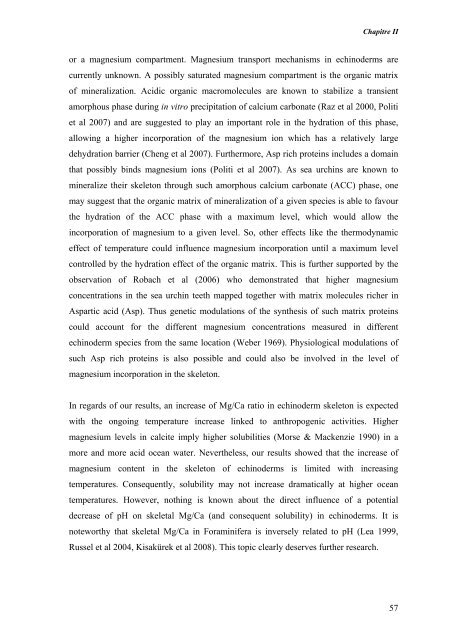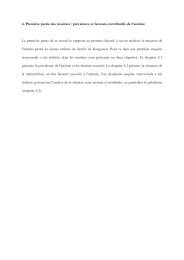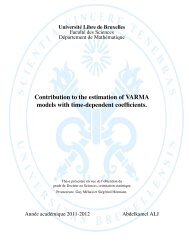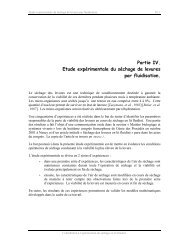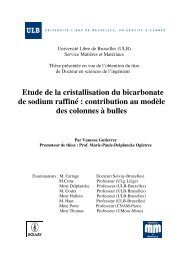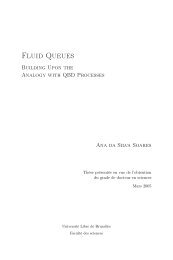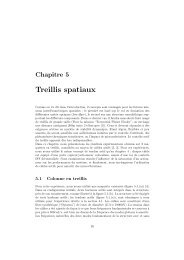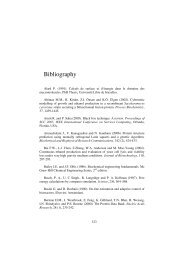Diapositive 1 - de l'Université libre de Bruxelles
Diapositive 1 - de l'Université libre de Bruxelles
Diapositive 1 - de l'Université libre de Bruxelles
You also want an ePaper? Increase the reach of your titles
YUMPU automatically turns print PDFs into web optimized ePapers that Google loves.
Chapitre IIor a magnesium compartment. Magnesium transport mechanisms in echino<strong>de</strong>rms arecurrently unknown. A possibly saturated magnesium compartment is the organic matrixof mineralization. Acidic organic macromolecules are known to stabilize a transientamorphous phase during in vitro precipitation of calcium carbonate (Raz et al 2000, Politiet al 2007) and are suggested to play an important role in the hydration of this phase,allowing a higher incorporation of the magnesium ion which has a relatively large<strong>de</strong>hydration barrier (Cheng et al 2007). Furthermore, Asp rich proteins inclu<strong>de</strong>s a domainthat possibly binds magnesium ions (Politi et al 2007). As sea urchins are known tomineralize their skeleton through such amorphous calcium carbonate (ACC) phase, onemay suggest that the organic matrix of mineralization of a given species is able to favourthe hydration of the ACC phase with a maximum level, which would allow theincorporation of magnesium to a given level. So, other effects like the thermodynamiceffect of temperature could influence magnesium incorporation until a maximum levelcontrolled by the hydration effect of the organic matrix. This is further supported by theobservation of Robach et al (2006) who <strong>de</strong>monstrated that higher magnesiumconcentrations in the sea urchin teeth mapped together with matrix molecules richer inAspartic acid (Asp). Thus genetic modulations of the synthesis of such matrix proteinscould account for the different magnesium concentrations measured in differentechino<strong>de</strong>rm species from the same location (Weber 1969). Physiological modulations ofsuch Asp rich proteins is also possible and could also be involved in the level ofmagnesium incorporation in the skeleton.In regards of our results, an increase of Mg/Ca ratio in echino<strong>de</strong>rm skeleton is expectedwith the ongoing temperature increase linked to anthropogenic activities. Highermagnesium levels in calcite imply higher solubilities (Morse & Mackenzie 1990) in amore and more acid ocean water. Nevertheless, our results showed that the increase ofmagnesium content in the skeleton of echino<strong>de</strong>rms is limited with increasingtemperatures. Consequently, solubility may not increase dramatically at higher oceantemperatures. However, nothing is known about the direct influence of a potential<strong>de</strong>crease of pH on skeletal Mg/Ca (and consequent solubility) in echino<strong>de</strong>rms. It isnoteworthy that skeletal Mg/Ca in Foraminifera is inversely related to pH (Lea 1999,Russel et al 2004, Kisakürek et al 2008). This topic clearly <strong>de</strong>serves further research.57


